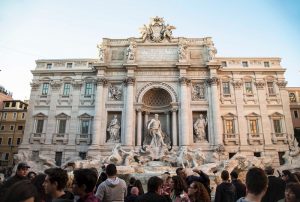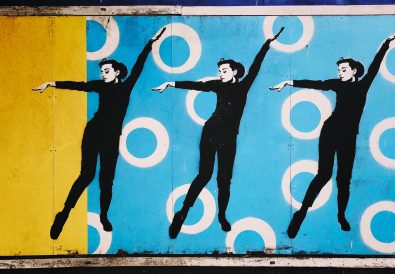
One visit to Rome is never enough, and 72 hours in Rome is still too short. Rome is the capital city of Italy and is frequently visited by tourists from all over the world. With the spring and summer months packed out with tourists, Rome can still be enjoyed in the winter months. There is so much to see in this deeply religious and historic city.
In this article we are going to lay out a number of things to see and do that will easily fill a 3 day itinerary and help you explore the city of Rome.
Where to stay
Hotel Domus Sessoriana
If you’re in search of a good hotel within close proximity to major attractions, then Hotel Domus Sessoriana is our recommended hotel, for best price and location. Most major attractions are within a reasonable walking distance.
Prices are usually around €78 per night, including breakfast, for 2 people. It is close to public transport, as well as quaint little restaurants, including popular bakeries.
The hotel is also situated next door to the Basilica of the Holy Cross. Here, you’ll find a number of rare artefacts, including the original sign which was nailed above the cross of Jesus, as well as a large copy of the shroud of Turin, among other holy relics.
Colosseum
No trip to Rome would ever be complete, without visiting The Colosseum. This was the largest amphitheatre of its time, with the ability to hold fifty to eighty thousand people at once. It was built by the exiled Jews in 70AD, on volcanic rock and concrete. The Emporer, Vespasian, used the plunder from the Jewish Temple to pay for the building expenses. In addition, it was used for gladiatorial and wild animal fights, as well as other forms of entertainment.
Much of it has been destroyed, but is still a spectacular sight to behold, as you walk up the stairs and seating areas. The Colosseum also offers audio guides, which can provide you with a deeper understanding of the Colosseum and its history. Tickets cost up to €16.
Arch of Titus
Nearby the Colosseum, is the Arch of Titus, which is a Roman Triumphal Arch. Titus was the Roman general who exiled the Jews and brought them to Rome in 70AD. You can see a detailed carving of the exile on the arch, completed by the Jews themselves. As well as this, you can also view carvings of the many temple artefacts that were plundered by the Romans.
The Pantheon
The famous Pantheon, built between A.D 118 and 125, is known to be one of the most preserved and influential buildings of ancient Rome. This popular landmark, is a Roman temple, dedicated to all the gods of pagan Rome. Its names, comes from a Greek adjective, meaning “honor all Gods”.
During the Renaissance, the Pantheon was used as a burial site. The well know Italian painter, Raphael, can be found buried here.
The Roman Forum
The Roman Forum can be found in the centre of Rome, nearby the Colosseum. Surrounded by the ruins of a numerous important government buildings of Ancient Imperial Rome. The Roman Forum was the centre of trade and commerce, law, politics and other governmental issues of public concern in Imperial Rome.
It was the place for elections, triumphal processions, criminal trials, public speeches and much more. Today it attracts over 4.5 million visitors yearly.
Palatine Hill
Considered as an archeological site, Palatine Hill is the central hill out of the Seven Hills of Rome. This is where the original Romans lived before the growth of the Empire and the expansion of the city.
It is also believed to be the place where Romulous and Remus were found with the she-wolf. Later it became the site of Ceasar’s Palace as well as one of the upper class residential areas. You can also get a spectacular view of the Roman Forum and much of the rest of Rome.
Mamertine Prison
Mamertine Prison was built in the 7th Century BC and is the famous prison site where St Paul and St Peter were imprisoned before their execution. St Paul, being a Roman citizen, had his head cut off, and Peter was crucified upside down. Prisoners were lowered through
a hole in the stone floor into the lowest part of the dungeon.
The site featured on the recent movie “The Apostle Paul”. You can now enter the lowest section of the prison via stairs. Entry to the prison costs 10 Euros, keeping in mind that no flash or tripods are allowed.
Vatican Museum
The Vatican Museum is huge and will take you at least half a day to explore. There are options to purchase guided tours, which will take you areas that others are not normally allowed to enter.
The Vatican Museum is filled with rare historical artefacts from different parts of history both BC and AD, including a mass of catholic church sculptures and paintings throughout the centuries. Upon exit you will be able to visit the Sistine Chapel. There are strict rules about photography in the Chapel so be aware of the rules. A visit to the Vatican costs up to €17.
St Peter’s Basilica
St Peter’s Basiclica is a huge Renaissance style Cathedral in the centre of Vatican City. It is the largest church in the world. With stunning architecture, it is breath taking both inside and out. Catholic tradition teaches that the church is built on the burial site of St Peter.
Entry to St Peter’s Basilica is free but there are long lines and security checks. Even though the lines are long they tend to move fairly quickly. Once inside enjoy the paintings, sculpture and architecture of the Cathedral.
Spanish Steps
This famous monumental tourist stairway, consists of around 135 steps and dates back to the 1700’s. From the bottom of Piazza di Spagna, these steep steps lead up to the Trinita dei Monti Church. Many tourists flock to this area, even during the cooler months. It’s the
perfect spot to relax or watch the sun go down.
At times, you can often see local artists painting portraits of tourists, to serve as a souvenir. The atmosphere is great and you can also admire and take photographs in front of the Fontana della Barcaccia fountain. The beauty of the Spanish Steps, is that it is free. Keep in mind that as from late 2019, sitting on the steps is no longer permitted.
Trevi Foundation

A short walk from the Spanish Steps, you will find the largest fountain in the city and the most famous fountain in the world. The iconic Trevi Fountain, stands at approximately 26 metres high and almost 50 metres wide.
No trip to Rome is complete without a visit to the Fontana di Trevi. Legend holds that if you visit Trevi Fountain and throw a coin over your shoulder, into the fountain, this will ensure a return to Rome. I have also heard this tradition dates back to ancient Roman times, when the Romans threw coins in the water to ensure the gods of water had favour on them and their journey.
Today’s article was brought to you by Jasmin of Aussies Move Abroad and Blush and Pose Photography



